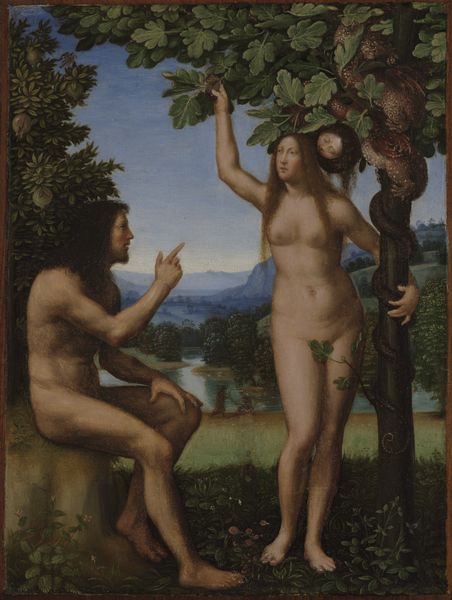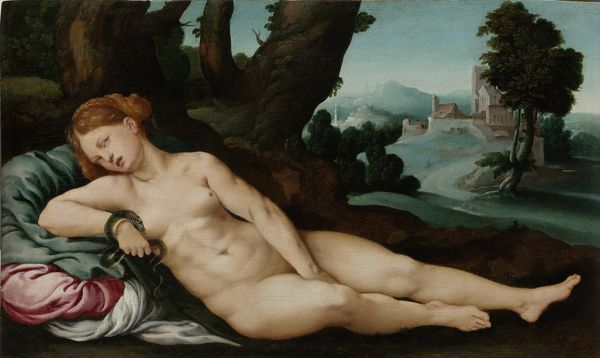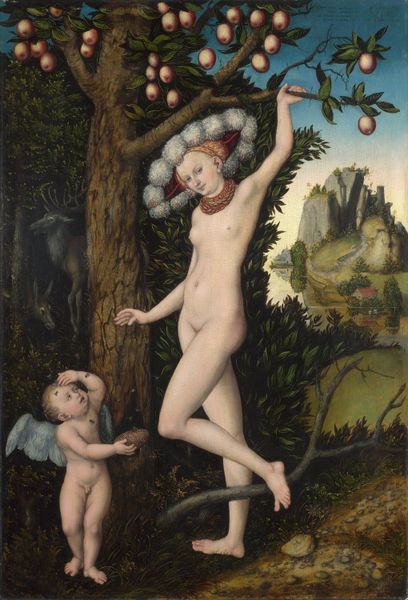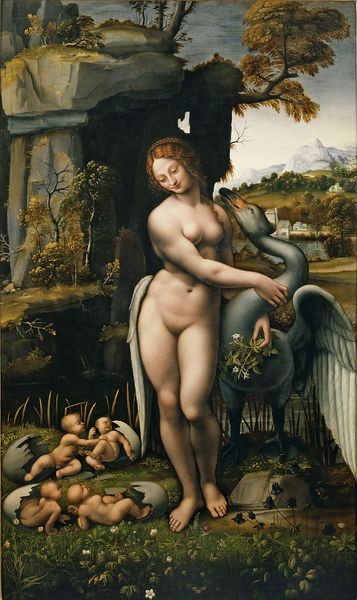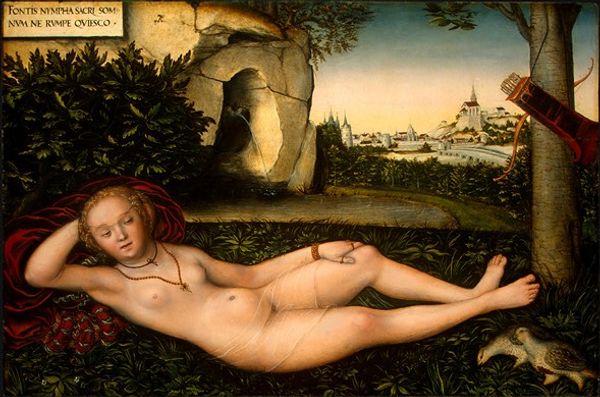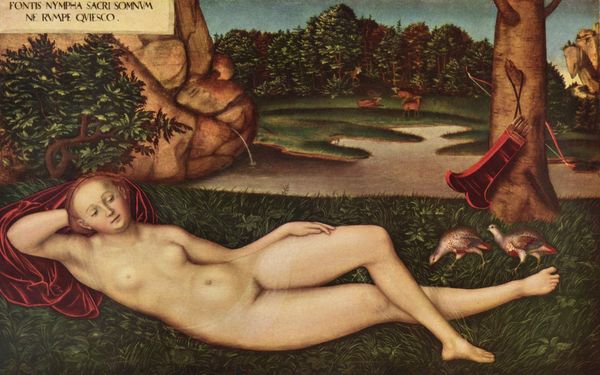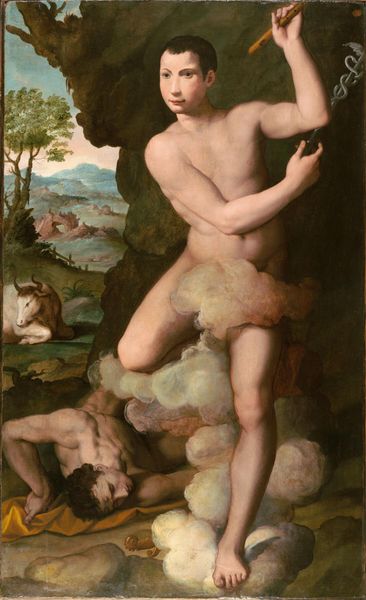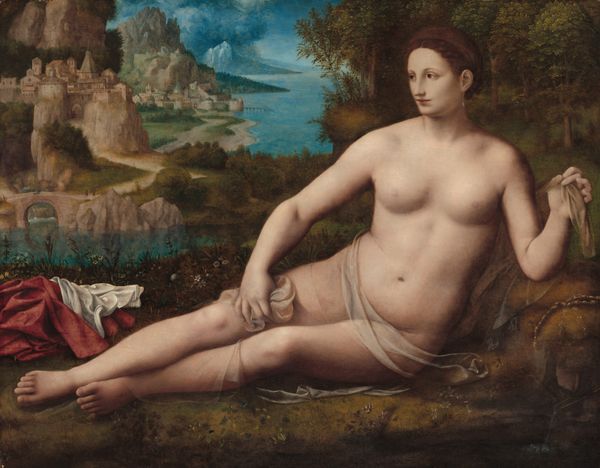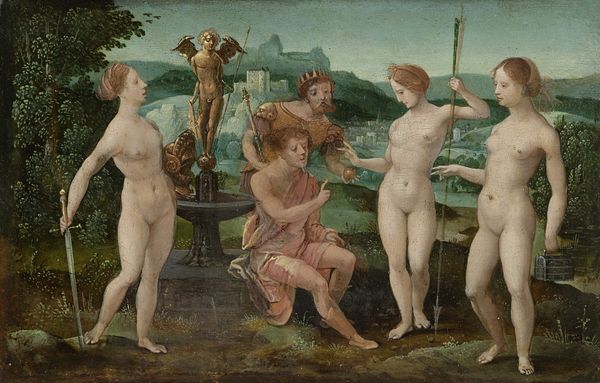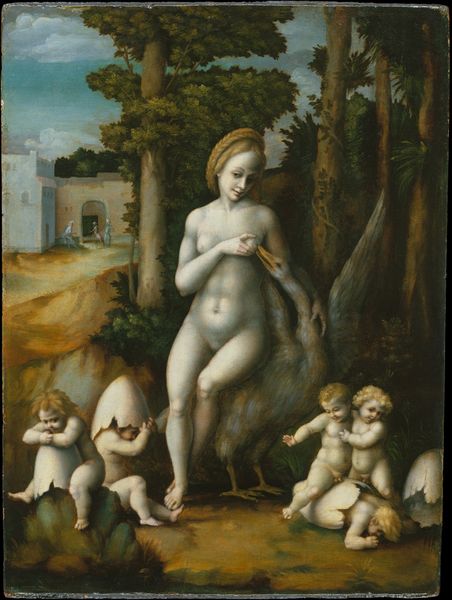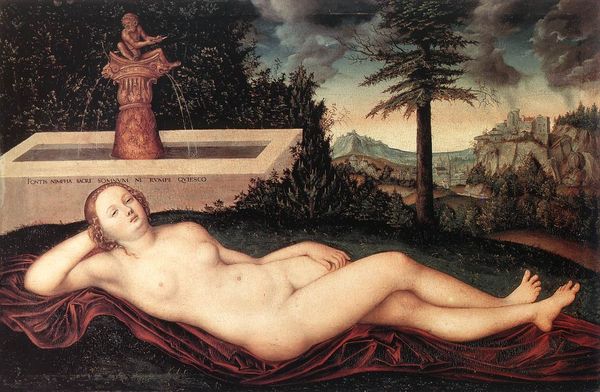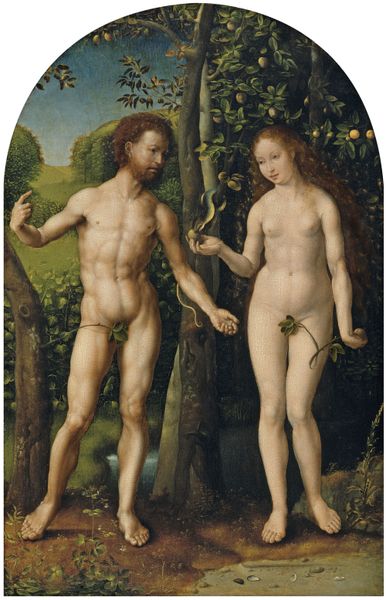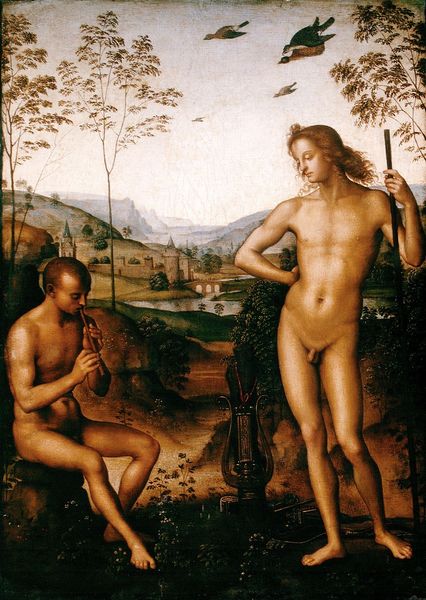
panel, oil-paint
#
portrait
#
high-renaissance
#
panel
#
allegory
#
oil-paint
#
landscape
#
figuration
#
oil painting
#
history-painting
#
italian-renaissance
#
nude
#
realism
Dimensions: Each 26 3/8 x 61 3/4 in. (67 x 156.8 cm)
Copyright: Public Domain
Curator: The title of this piece is "Adam; Eve" by Giuliano Bugiardini, and it dates from 1495 to 1554. You can currently find it on display at the Metropolitan Museum of Art. Editor: What strikes me immediately is the odd dual face of temptation: Eve alongside the serpent, almost like two aspects of a single entity. It feels less like a depiction of an event and more like an exploration of inner conflict. Curator: Indeed, the artist, working within the Florentine Renaissance, often received commissions from the Medici circle. This portrayal may have served didactic purposes, instructing viewers on moral themes within a framework endorsed by the era's political elite. Bugiardini's mentors included Michelangelo and Raphael, which is easy to see, yet his workshop wasn't the most well received during its time. Editor: Right, because beyond that, there's the apple, the traditional symbol of knowledge and sin. However, in this image, the faces draw us in; the doubled face really throws you for a loop. Is this the original sin viewed not just as an action but a fracturing of the self? The symbol speaks to psychology here; Eve's struggle mirrored in this chimera-like serpent. Curator: And if we zoom out from that psychological point you make and focus on its broader context, this painting reminds us that during the Italian Renaissance, artistic patronage shaped the narrative around religious stories like Adam and Eve, promoting humanist values that often walked a tightrope between theological dogma and new philosophical thought. The elite could support what imagery was promoted. Editor: I agree, which brings an added weight to the serpent-Eve icon, a symbol used throughout centuries that continues to have resonance even today when deconstructing archetypes through both the artistic and psychological frameworks that Bugiardini seemed to foreshadow. The painting offers so many dimensions. Curator: Indeed. This work is fascinating because it shows both the historical contexts that dictated what was "acceptable" while containing an intriguing symbol that remains a fascinating cultural idea today. Editor: I will carry that image of the faces, doubled in its place, for the rest of the day I suspect.
Comments
No comments
Be the first to comment and join the conversation on the ultimate creative platform.
